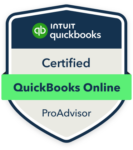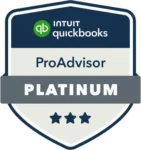Have you ever wondered if your business is financially healthy? Financial health check-ups are like regular doctor visits for your business’s finances. They help you determine where you are good with financial management and where to improve. This ensures that your business is doing well and keeps growing.
Regular financial health check-ups are crucial. Did you know that 82% of small businesses fail due to poor cash flow management? By regularly assessing your financial health, you can avoid common pitfalls and make informed decisions.
This blog will explore these financial check-ups, their benefits, key areas to assess, and steps to conduct them. Stay tuned for practical tips and insights to keep your business financially fit. For personalized financial health .check-ups, contact LUCI Financial Solutions today!
What is a Financial Health Check-Up?

A financial check-up thoroughly reviews your business’s financial situation. It helps you understand your financial strengths and areas needing improvement. This review looks at how well your business is doing financially. Its purpose is to ensure your business is financially sound, compliant with regulations, and poised for growth.
Benefits of Regular Financial Health Check-Ups:
- Identifying Strengths & Weaknesses: Regular check-ups help you see where your business is strong and where it needs improvement. This knowledge lets you focus on what’s working and fix what isn’t.
- Improving Management & Decision-Making: You can make better decisions by understanding your financial health. You’ll know when to invest, when to save, and how to manage your money more powerfully.
- Allowing Compliance with Financial Regulations: Remaining compliant is essential. Regular check-ups help your business stay out of trouble by ensuring compliance with all the rules and avoiding fines and legal problems.
- Boosting Business Growth & Sustainability: Knowing your financial status helps you plan for growth. You can set realistic goals, manage risks, and make sure your business remains sustainable in the long term.
Key Areas to Assess in a Financial Health Check-Up:
To keep your business financially strong, it’s essential to look closely at important areas often. These include cash flow management, profit and loss analysis, balance sheet review, debt management, expense analysis, tax compliance, financial ratios, and budgeting and forecasting.
Evaluating these areas helps determine what your business is good at, what it’s not, and where it can improve. This will help your business do well.
1. Cash Flow Management:
Cash flow is the lifeblood of any business. It refers to the money moving in and out of your business. Good cash flow means paying bills, investing in growth, and handling unexpected expenses. Poor cash flow can lead to financial trouble, even if your business is profitable.
Tips for Monitoring and Improving Cash Flow
- Track All Expenses & Income: Regularly record all transactions & use accounting software to stay organized.
- Create a Cash Flow Forecast: Predict future cash flow based on past data and plan for slow periods and peak times.
- Invoice Promptly: Send invoices immediately after delivering goods or services and follow up on late payments.
- Control Costs: Review expenses regularly to cut unnecessary costs & negotiate better terms with suppliers.
- Maintain a Cash Reserve: Save some of your income to handle unexpected expenses.
Impact on Small Businesses:
Good cash flow management ensures your business can operate smoothly, invest in opportunities, and withstand financial challenges. Not paying attention to the money coming in and going out can cause problems like late payments, more debt, and the business eventually closing down.
2. Profit & Loss Analysis:

A Profit and Loss (P&L) statement, or income statement, summarizes the revenues, costs, and expenses incurred during a specific period, usually a fiscal quarter or year. It shows how well a business does financially, whether it makes or loses money.
Identifying Areas for Improvement & Profitability:
In financial health check-ups, regularly analyzing your P&L statement helps you understand the profitability of your business. Key metrics to monitor include:
- Revenue: Track all income from sales and services.
- Cost of Goods Sold (COGS): Monitor direct costs of producing goods or services sold.
- Gross Profit: Calculate by subtracting COGS from revenue.
- Operating Expenses: Keep an eye on all indirect costs, such as rent, utilities, and salaries.
- Net Profit: Determine by subtracting operating expenses from gross profit.
3. Balance Sheet Review:
A balance sheet provides a snapshot of a business’s financial position at a specific point in time. It explains what the company owns, what it owes, and the owner’s part in the company. Here are some key metrics to monitor;
Assets:
The business owns these resources, including cash, inventory, property, and equipment. Monitoring what the company owns helps ensure there’s enough to keep the business running and growing.
- Current Assets: Cash and other assets that are expected to convert to cash within a year.
- Fixed Assets: Long-term investments like property, equipment, and machinery.
Liabilities:
The business’s obligations to others include loans, accounts payable, and mortgages. Tracking what you owe helps you manage your debts and prepare for upcoming payments.
- Current Liabilities: Debts and obligations due within a year.
- Long-Term Liabilities: Debts and obligations due after a year.
Equity:
Represents the owner’s stake in the company.
- Calculation: Assets minus liabilities.
- Management: Monitoring equity provides insight into the business’s financial health and stability.
4. Debt Management:
Businesses need to manage their debt well for good financial health. The first step is to assess your current debt levels. This involves looking at all your outstanding debts, including loans, credit lines, and other obligations. Understanding the total amount owed, the interest rates, and the repayment schedules is essential. Create a list of all debts, including the following details:
- Type of Debt: Loans, credit cards, lines of credit, etc.
- Amount Owed: Total balance remaining.
- Interest Rates: The cost of borrowing.
- Repayment Terms: Monthly payments, due dates, and any penalties for late payments.
Strategies for Managing & Reducing Debt:
Once you know how much money you owe, you can make a plan to handle and lower it. Here are some practical approaches:
- Prioritize Debts: Focus on paying off high-interest debts first to save on interest costs. Think about using the debt snowball method. This method focuses on paying off your smallest debts first to help you keep going.
- Consolidate Debts: Combine multiple debts into a single loan with a lower interest rate. This simplifies payments and can reduce overall interest costs.
- Negotiate Terms: Contact the people you owe money to and ask if you can pay back less interest or take longer to pay it off. This can make debt more manageable and improve cash flow.
- Increase Payments: Allocate extra funds to debt repayment whenever possible. Making more than the minimum payment reduces the principal balance faster.
- Reduce Expenses: Cut unnecessary costs and redirect the savings towards debt repayment. This helps free up more funds to pay down debt.
5. Expense Analysis:
Regular expense analysis is vital for maintaining a healthy financial status. Start by reviewing and categorizing all business expenses. This involves going through your financial records and sorting expenses into categories such as:
- Fixed Costs: Rent, salaries, insurance, and other recurring expenses.
- Variable Costs: Utilities, raw materials, and other costs fluctuate with business activity.
- Discretionary Costs: Non-essential expenses like travel, entertainment, and office supplies.
Categorizing expenses helps you see where your money is going and identify patterns in spending.
Point Out Unnecessary Costs & Opportunities for Savings:
After organizing expenses, the next thing to do is find where to save money by cutting back on things we don’t need. Here are some practical tips on maintaining financial health check-ups:
- Audit Subscriptions & Services: Review all recurring subscriptions and services to ensure they are still needed. Cancel any that are no longer useful or find cheaper alternatives.
- Negotiate with Suppliers: Contact suppliers to negotiate better rates or payment terms. Consider bulk purchasing or long-term contracts for discounts.
- Implement Cost-Saving Measures: Use equipment and practices that use less energy to save energy. Set up rules for employees to work from home to save money on office costs.
- Monitor Expenses Regularly: Monitor expenses closely to catch unnecessary spending early. Use accounting software to track and analyze spending patterns.
- Encourage a Cost-Conscious Culture: Educate employees about the importance of cost-saving measures and ask staff for ideas on how to spend less money.
6. Tax Compliance:

Staying on top of tax compliance is crucial for any business. Filing tax returns correctly and on time helps avoid legal problems and fines. Make sure all financial records are current and accurate. Use accounting software to track how much money you make, how much you spend, and what you can subtract from your taxes.
Regularly review tax laws to stay informed about changes affecting your business.
Benefits of Staying Compliant with Tax Regulations:
- Avoid Penalties: Filing taxes late or with mistakes can lead to hefty fines and extra interest charges.
- Reputation Management: Compliance enhances your business’s reputation with stakeholders and clients.
- Financial Health: Filing your taxes correctly helps you know how well your business is doing financially and enables you to make better financial plans and decisions.
7. Financial Ratios:
Financial ratios are critical metrics for boosting a business’s financial health check-up. They show whether a company can pay its bills in the short term (liquidity ratios) and stay stable in the long term (solvency ratios).
These ratios help companies understand how well they are doing, handle the money they owe, and make smart choices about money. Here are the fundamental financial ratios to monitor;
Liquidity Ratios:
- Current Ratio: Measures your ability to cover short-term liabilities with short-term assets.
- Quick Ratio: The current ratio doesn’t include inventory, giving a stricter measure of how quickly a company can pay its debts.
Solvency Ratios:
- Debt-to-Equity Ratio: Compares how much of the company’s money comes from debt and how much comes from the shareholders.
- Interest Coverage Ratio: Measures how easily a business can pay interest on outstanding debt with earnings.
How to Use These Ratios to Assess Financial Health?
- Evaluate Liquidity: Use liquidity ratios to ensure your business can meet its short-term obligations. A ratio above one is generally considered healthy.
- Assess Solvency: Solvency ratios help determine the long-term viability of your business. Lower debt-to-equity ratios are typically better, indicating less reliance on borrowed money.
- Monitor Profitability: Examine how well your business uses its stuff to make money. These ratios show how well a company is doing and if it has enough money to stay stable.
8. Budgeting & Forecasting:
A budget is a financial plan that outlines expected income and expenses over a specific period. It is essential for managing resources, setting financial goals, and making informed decisions. A reasonable budget helps you see where your money goes, ensures you have enough for essential things, and avoids spending too much.
Tips for Accurate Financial Forecasting:
- Use Historical Data: Check out past financial performance to predict future trends. Identify seasonal patterns and cyclical trends affecting your business.
- Regularly Update Forecasts: Adjust forecasts based on recent data and changes in the market. Make revisions as necessary to reflect new information and business developments.
- Consider Different Scenarios: Create multiple forecast scenarios to prepare for various economic conditions. Plan for best-case, worst-case, and most likely scenarios to better prepare for uncertainties.
- Involve Key Stakeholders: Collaborate with team members with insights into different business areas. Use suggestions from sales, marketing, and operations to make a complete prediction.
- Leverage Technology: Improve accuracy with financial forecasting tools and software—Automate data collection and analysis for real-time updates and insights.
Steps to Conduct a Financial Health Check-Up:

A financial health check-up involves several vital steps to ensure your business stays financially healthy. First, gather all necessary financial documents. Next, review the financial information using various methods and tools.
Get advice from financial experts to understand your situation better, and then use their suggestions to improve it.
Gather Financial Documents:
The first thing to do for a financial health check-up is to collect all the documents you need about your money. These documents provide a comprehensive view of your business’s economic status. Key documents include:
- Income Statements: Shows your revenue, expenses, and profit over a specific period.
- Balance Sheets: These detail your assets, liabilities, and equity at a particular time.
- Cash Flow Statements: These track the cash flow in and out of your business, highlighting liquidity and financial health.
Figure Out Financial Data:
Once you have gathered all the necessary documents, the next step is to analyze the financial data. This means looking at different numbers and patterns in your finances to see how well your business is doing. Key techniques include:
- Trend Analysis: Compare current data with past periods to identify trends.
- Ratio Analysis: Use financial ratios to assess liquidity, profitability, and solvency.
Tools and software can significantly assist in this process. Accounting software like QuickBooks, Xero, and financial analysis tools can automate data collection, calculation, and visualization, making it easier to spot patterns and issues.
Consult with Financial Experts:
Seeking professional advice is a valuable step in the financial health check-up process. Financial experts bring a wealth of knowledge and experience that can provide deeper insights into your financial data. Benefits of consulting with experts include:
- Objective Analysis: Experts offer an unbiased view of your financial health.
- Specialized Knowledge: They can identify issues and opportunities that you might overlook.
- Strategic Advice: Experts can provide tailored strategies to improve your financial health.
Implement Multiple Findings:
The final step is to implement the findings from your financial health check-up. This involves creating an action plan based on your analysis results and financial experts’ advice. Key steps include:
- Develop an Action Plan: Outline specific actions to address identified issues and capitalize on opportunities. For example, if your cash flow could be more robust, the plan might include strategies to improve invoicing and reduce expenses.
- Monitor Progress: Review the progress of your action plan regularly. Use KPIs to see how well your business is doing and ensure it’s moving in the right direction.
- Adjust as Needed: Be flexible and ready to make adjustments. If some plans need to be fixed, change your approach based on feedback and analysis.
Common Challenges in Financial Health Check-Ups:
Conducting financial health checkups can be challenging. It is essential to find problems like messy record-keeping and hard-to-understand financial information. Overcoming these challenges requires a systematic plan, like keeping financial records current and using trustworthy accounting software.
To maintain regular check-ups, set a fixed schedule, involve key team members, and seek professional advice when needed. Staying prepared helps your business stay financially strong and adjust to economic changes.
In Conclusion:
Regular financial check-ups are essential for keeping your business stable and helping it grow. Regular tests help determine what you are good at, what you are not, and what you can do better. By conducting these check-ups routinely, you can ensure your business stays financially sound.
For expert financial health check-up services, contact LUCI Financial Solutions today! We are here to support your business’s financial health and growth.











